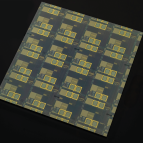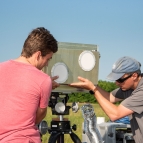Reagan Test Site Distributed Operations

The U.S. Army’s Reagan Test Site (RTS), located approximately 2,300 miles west southwest of Hawaii on the Kwajalein Atoll, Marshall Islands, is a world-class range and test facility. Its unique instrumentation sensors— including high-fidelity metric and signature radars and optical sensors—play a vital role in the research, development, testing, and evaluation required to support U.S. missile defense and space programs.
The RTS Distributed Operations (RDO) program in 2008 transformed RTS from a locally operated range to a globally operated national asset. A fundamental aspect of the program involved the distribution of mission tasks among various locations and remote operation of the range’s sensors, command-and-control center, and space operations.
The RDO program focused on allowing range operations from the continental United States; distributing RTS activities; improving range accessibility for users; enhancing interoperability with users and other ranges, sensors, and elements; and increasing information availability with reliable, high-bandwidth communications.
The RDO program relocated the primary command-and-control facility to Huntsville, Alabama, from its previous location on Kwajalein Island. Relocating the facility closer to its customers provided improved access for mission execution activities and for training, demonstrations, mission planning, and data distribution.
The RDO program achieved improvements and modernization in four key functional areas: communications and information technology, distributed systems, sensor modernization, and mission operations. The communications upgrade focused on the core networking and communications infrastructure linking Kwajalein, Huntsville, and the Lincoln Space Surveillance Complex (located in Westford, Massachusetts). Building a reliable, high-bandwidth, low-latency network was crucial to a distributed range in which the command-and-control center and the sensors are operated from 7,300 miles away. A key infrastructure improvement was a high-bandwidth fiber-optic link between Kwajalein and Guam that replaced current satellite communication capabilities in fall 2010.
The Lincoln Laboratory–developed command-and-control center at RTS has been certified for use as the site's mission control system. Mission operations were enhanced by more precisely defining concepts of operation, adapting the new Huntsville command-and-control facilities, enhancing mission planning tools and data products to accommodate distributed operations, and developing a collaborative work environment.
We continue to support the modernization of RTS-related operations. We are currently investigating ways to bring more functionality and capability to remote operations on RTS.



